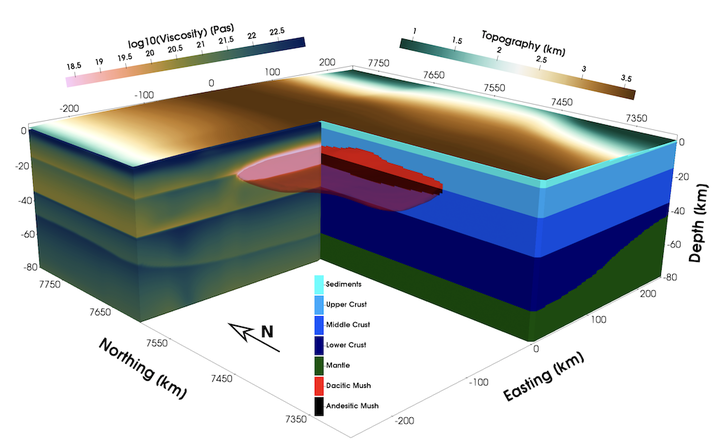A Multiphysics Approach to Constrain the Dynamics of the Altiplano-Puna Magmatic System.
 3D modelling setup of the Puna magmatic system.
3D modelling setup of the Puna magmatic system.
Abstract
Continuous Interferometric Synthetic Aperture Radar (InSAR) monitoring (>25 years) has revealed a concentric surface deformation pattern above the Altiplano-Puna magma body (APMB) in the central Andes. Here, we use a joint interpretation of seismic imaging, gravity anomalies, and InSAR data to constrain location, 3D geometry, and density of the magma body. By combining gravity modeling, thermomechanical modeling, scaling law analysis, and Bayesian inference, we are able to create a relationship between the geometry of a mid-crustal magma body and surface observations. Furthermore, we can estimate the uncertainties associated with the geometry of the APMB and identify the most important parameters that control the dynamics of the system. We constrain the density contrast between the APMB and the surrounding host rock to 90–130 kg m−3 (2σ) and the associated melt fraction to 15%–22%. Our visco-elasto-plastic 3D thermomechanical model reproduces the observed surface deformation self-consistently by buoyancy driven magma transport without the need for additional pressure sources. The flow pattern is controlled by a central rise at the top of the APMB whose geometry can be constrained with the help of InSAR observations while Bouguer anomalies constrain the deeper parts of the APMB. Automated scaling law analysis shows that the rheology of the upper crust and the magma mush as well as the density contrast between the two are the most important parameters in the system and need to be constrained for a better understanding of the subsurface processes.